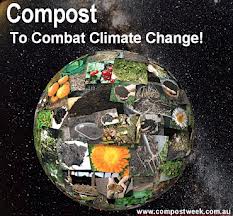Conserving natural resources not only saves money but also valuable resources. Here are some valuable tips to save the Earth as well as the human race.
1. Save trees, use less Paper – To satisfy the world’s need for paper, every year 4 million trees are slaughtered. Both money and trees can be saved from ending up in the landfills-
• Switching from paper napkins and towels to cloth. Re-useable dishes can be used instead of disposable plates and glasses.
• Magazines can be viewed online. Roughly 90% of the magazines are discarded and only 44% are recycled.
• Give old newspapers and magazines to the kabadiwala in exchange of little money. Recycling paper is healthy for the environment.
• Using online banking, which is easier from theft and time-saving and money for stamps. It reduces the amount of paper mail coming to our households.

2.Replace light bulbs- Switching from incandescent light bulbs to compact florescent bulbs(CFC) or light emitting diode (LED) bulbs is feasible.
• CFCs use 75% less energy than standard incandescent light bulbs.
• Their lasting period is 10 times more normal bulbs with an average savings of $35 per bulb.

3. Say no to Plastic- Use re-useable shopping bags- Every year 13 billion bags are issued to shoppers across the world, that is 220 per person. These bags are hardly used for 12 minutes before being discarded but they remain in the environment for thousands of years.
• Stores can make provisions for collecting re-used bags and re-cycling them or issuing cloth or paper bags to their customers.

4. Think re-useable- Reducing waste by re-using item is a far better option than recycling.
• Use your own coffee mug at work instead of Styrofoam.
• use re-useable BPA free water bottles rather than disposing costly ones.
• Re-use glass jars, from storing pasta to pickles.
• Use washable food containers instead of plastic jars.


5. Turn off lights when not in use- Some appliances consume energy when even when not in use. On an average small electronics, computers and entertainment gadgets account for 44% of the total household’s electricity costs.
• Turn off lights and fans in unoccupied areas and open the windows and shades to take an advantage of the natural light and air.
• Unplug unnecessary gadgets like cell phone chargers when not in use.
• Set the computer setting to sleep after 15 minutes of use.
• Go old school and use a solar powered clothes dryer- a clothesline.
• TVs, hair dryer, printer, computer, consume kilo-watts of energy in stand-by mode. Using power strips and flipping the switch while not in use will save energy and lower the electric bill.

6. Conserve Water- As population increases the demand for the precious resource increases. With the increasing demand there is a shortage of freshwater for consumption. To ensure adequate water resources for future needs, we must learn to conserve water.
• Installing an aerator on all our faucets can cut the annual consumption of water to half.
• Turning off taps while brushing teeth, shaving, or washing face can help save 4.5 gallons each time.
• Rain water harvesting is also an effective technique to collect natural rain water using it for washing and gardening purposes.
• Run the dishwasher and clothes washer when it is full only.

7. Buy local and organic- Every fruit or vegetable that we eat travels 1500 miles before it hits our local supermarkets, that burns a lot of fuel. Purchasing and consuming locally produced fruits and vegetables can help save thousands of currency and prevent wastage of fuel.
• Supports local farmers and growth of local economy.
• It is cheaper because it does involve many middle men.
• It reduces the amount of pesticides and fertilizers entering the air, soil, water and our own body.

8. Start composting- As landfill space is increasingly becoming scarce, the needless trash can be easily reduced by building a compost bin. Composting cuts disposal costs that comes back to you, saves energy needed to transport waste and reduces air and water pollution.
• Composting eliminates the need for chemical fertilizers.
• Saves energy on artificial soil and mulch for landscaping.
• Manure produced can be used for increasing soil fertility.

9. Use alternative sources of energy- Renewable sources of energy are in- exhaustible and can be used forever. Initial investment is high but they are effective in the long run.
• Solar batteries and charges can be used for charging appliances and devices. Solar panels and wind mills can be installed.
• Rain- water harvesting techniques can be used to use natural rain water.

10. Regulate thermostat and use insulation- Heating and cooling occupies a large portion of one’s budget and energy use. Energy needs can be reduced by 30 percent by investing on an insulator.
• For every degree you lower the thermostat in the winter, you will save up to 5% on heating costs.
• Switching to a programmable thermostat when feasible. A homeowner can save $180 a year by properly setting programmable thermostats and maintaining those settings.
• Caulk or weather-strip windows and doors- The department of Energy states that if every gas-heated home were produced caulked and weather stripped, we could save enough gas to heat almost four million homes every year.

Leave a Reply